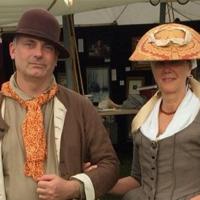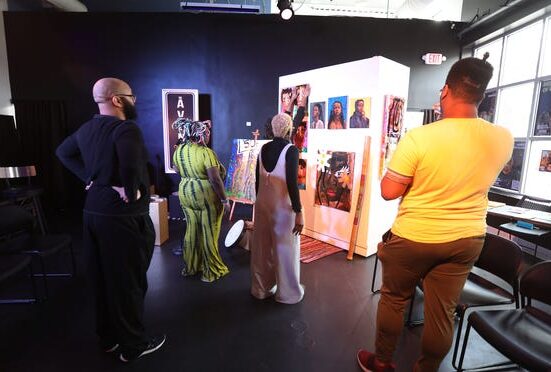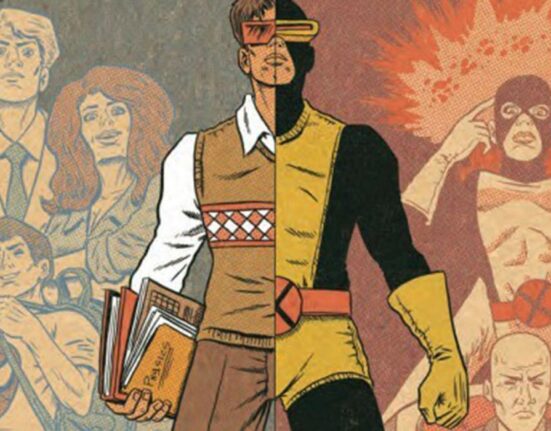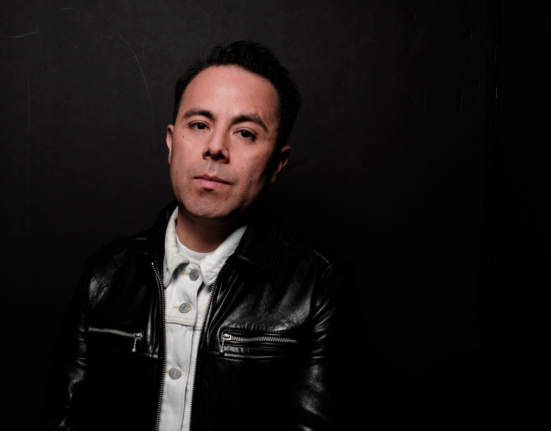Unlock the Editor’s Digest for free
Roula Khalaf, Editor of the FT, selects her favourite stories in this weekly newsletter.
The writer is a Soho resident
Earlier this month, I visited the Colony Rooms, the notorious Soho artists’ club, which closed in 2008 and has been revived by the artist Darren Coffield in a nearby basement. Its nauseating green walls have been faithfully replicated. The walls are hung with newspaper clippings from gossip column items about the original club and its patrons: Francis Bacon, Lucian Freud and Damien Hirst.
Even so, an artists’ club is something of a misnomer. Most of the people who frequent them now are no such thing. Repelled by other establishments, they’ve landed somewhere that tolerates them. At the bar on the night I visited were a retired diplomat, a veteran journalist and an oil trader, along with a photographer and a few twenty-somethings with mullets.
If this assortment of folk were all hogging the bar, then where were today’s artists drinking? History has kept a good account of their favoured venues. In the 1851 book Scenes from the Bohemian Life, writer Henry Murger painted a portrait of les buveurs d’eau — the water drinkers — an intellectual Bohemian circle in 1840s Paris. They decried commercialism in art. They also, as a result, could not afford a glass of wine between them. Even a coffee was shared at Cafe Momus. Puccini’s La bohème is the romanticisation of Murger’s story.
The Nouvelle-Athènes café in Montmartre welcomed Degas — his portrait of the absinthe drinkers is set there — and Erik Satie played the piano. Meanwhile, Oscar Wilde, Rex Whistler and Aubrey Beardsley made the reputation of London’s Café Royal’s domino room, and Greenwich Village rose on the folk, poetry and hashish-smoking of the 1960s.
Art and writing, both solitary activities, need meeting places so movements can grow. It is convenient for the historian, biographer or aspiring intellectual to locate his or her heroes around the bistro table. But bars also need artists as a catalyst for their reputations. Currently, 180 The Strand, the Groucho and Soho House spend their time wooing talented artists and throwing parties for Frieze week. These creatives are invited into the zoo of celebrity, in return for free drinks.
One would like to think that of all these institutions, the Colony Rooms arrived by an accident of time — a den for emerging talents thrown together by artistic endeavour and unhealthy bank accounts. But it is not quite true.
Opened in 1948, as Soho’s tailors were making way for the film companies, Muriel Belcher, an artist’s model, was the first landlady. Francis Bacon was one of her first and most persistent customers. She spotted the opportunity, gave him free drinks and £10 a week in return for inviting his circle along. Dylan Thomas threw up on the carpet, idler Jeffrey Bernard idled there, and artists made their names merely by signing the guest book.
Its new iteration, in a basement in Heddon Street, off Regent Street, is a bar with a piano inviting song — not always tuneful — and retro prices. A G&T costs £4, bottled beers are a fiver. (In the same vein, the Academy, a literary club in Soho, has also introduced a wine known as “sous la table”, out of a box, and sold at “artists’ prices”.)
It is also a self-referential piece of social history, part of the lost spirit of Bohemia. But where did all the artists go? It is not just that city drinking got expensive. So did studio rents. The Dalston warehouses that fuelled the rise of east London became unaffordable. Some moved to the coastal towns of Margate and Hastings, others to Berlin and Lisbon.
Art increasingly resists the Bohemian formula. The council estates of London have become hotbeds of music and street art. The new Colony Rooms must accept that, if an artists’ café or bar exists, it is for those seeking the Bohemian life rather than those living it.
The last time I went drinking with an artist, it was a night in September, on Eastbourne beach. A small bonfire had been lit and 500 metres away, the Towner gallery blazed bright for the Turner Prize exhibition opening. Too much glitz, thought the artist Jesse Darling, winner of the prize, who’d invited his friends to the beach instead. We drank prosecco out of plastic glasses under a glowering sky, and outside the myth of one place.






